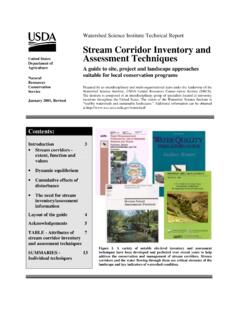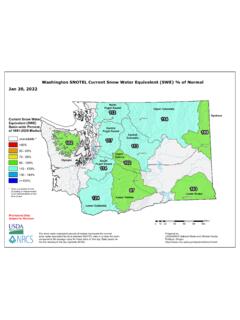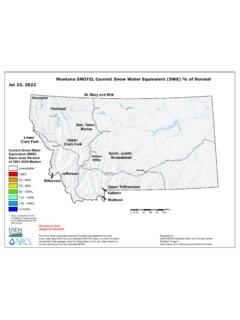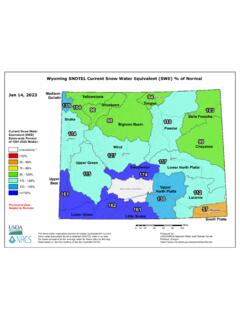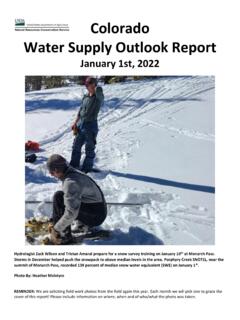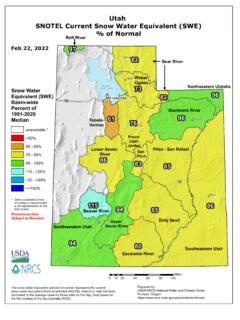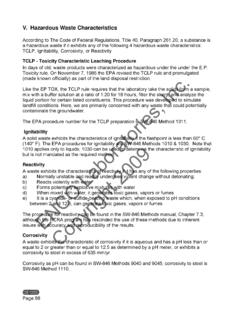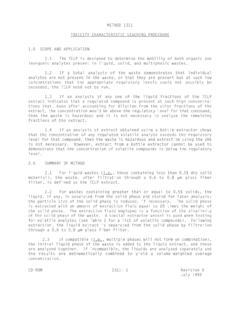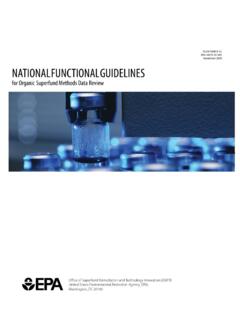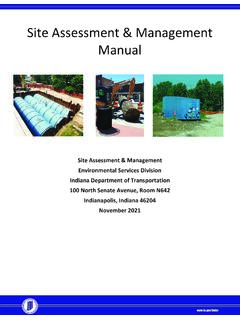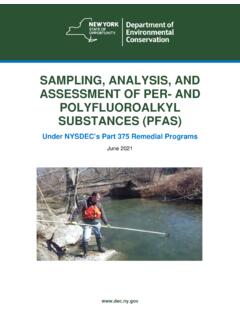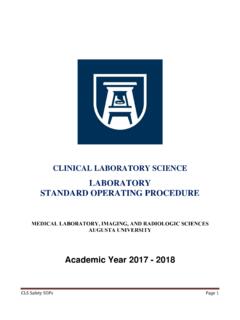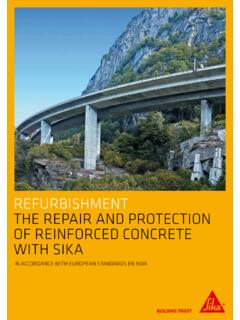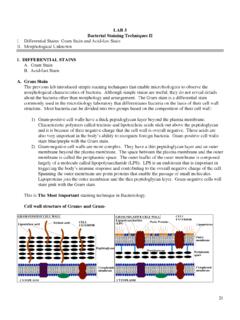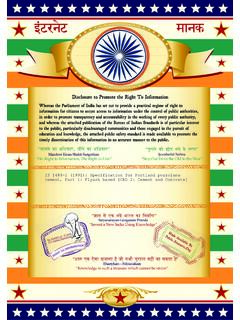Transcription of Chapter 2 Irrigation Water Requirements - USDA
1 Part 623 National Engineering HandbookIrrigation Water RequirementsChapter 22 1(210-vi-NEH, September 1993)United StatesDepartment ofAgricultureSoilConservationServicePart 623 NationalEngineeringHandbookChapter 2 Irrigation WaterRequirementsPart 623 National Engineering HandbookIrrigation Water RequirementsChapter 22 2(210-vi-NEH, September 1993)Issued September 1993 The United States Department of Agriculture ( usda ) prohibits discrimina-tion in its programs on the basis of race, color, national origin, sex, religion,age, disability, political beliefs, and marital or familial status.
2 (Not all pro-hibited bases apply to all programs.) Persons with disabilities who requirealternative means for communication of program information (braille, largeprint, audiotape, etc.) should contact the usda Office of Communicationsat (202) 720-5881 (voice) or (202) 720-7808 (TDD).To file a complaint, write the Secretary of Agriculture, Department ofAgriculture, Washington, DC 20250, or call (202) 720-7327 (voice) or (202)720-1127 (TDD). usda is an equal employment opportunity 623 National Engineering HandbookIrrigation Water RequirementsChapter 22 i(210-vi-NEH, September 1993)Preface2 iIrrigation is vital to produce acceptable quality and yield of crops on aridclimate croplands.
3 Supplemental Irrigation is also vital to produce acceptablequality and yield of crops on croplands in semi-arid and subhumid climatesduring seasonal droughty periods. The complete management of irrigationwater by the user is a necessary activity in our existence as a society. Compe-tition for a limited Water supply for other uses by the public require the irriga-tion Water user to provide much closer control than ever before. The impor-tance of irrigated crops is extremely vital to the public's management of Irrigation Water requires using the best estimatethat current technology can provide for the determination of crop Water useand field Irrigation Water Requirements .
4 Support for many of the estimatedvalues included in this Chapter come from field research and many fieldevaluations over many years. Field evaluations and ground truthing mustalways be used to further refine the estimates used for planning irrigationsystems. This Chapter of the SCS National Engineering Handbook (NEH)provides that current technology. It provides nationwide acceptable proce-dures to determine crop Water needs. The specific procedure or equationused depends on the availability of specific climatic data needed for thatprocess and the desirable intensity level of managing Irrigation 2 describes the processes that affect Water use Requirements for acrop, field, farm, group of farms, or project level evaluation.
5 The processesinclude evaluation of crop Water use, climatic relationship and data, refer-ence crop evapotranspiration, crop coefficients, leaching Requirements forsalinity control, temperature control and other auxiliary Water require-ments, effective precipitation, Water table contribution, Irrigation efficien-cies, on-farm Irrigation Requirements , and project Irrigation Chapter provides the processes for determining Irrigation Water re-quirements for state and local Irrigation 2 of Part 623 is a new Chapter to the family of chapters currently inNEH Section 15, Irrigation .
6 It is written for employees of the Soil Conserva-tion Service who provide technical assistance to the Water user with con-cerns for both Water quantity and Water quality. Other technical personnelfrom Federal, State, private, and local agencies will also find the chaptervery useful as a basic reference when providing technical assistance relat-ing to Irrigation Water chapters in NEH section 15 describe Soil-plant relationships and soil Water properties that affect move-ment, retention, and release of Water in soil Planning farm Irrigation systems Measurement of Irrigation Water Design of pumping plants Design criteria and design procedures for surface.
7 Sprinkler, andmicro Irrigation methods and the variety of systems for each methodthat can be adaptable to meet local crop, Water , and site conditionsand Irrigation concernsThese chapters will come under the new Part 623, Irrigation , in the NationalEngineering Handbook 623 National Engineering HandbookIrrigation Water RequirementsChapter 22 ii(210-vi-NEH, September 1993)Acknowledgments2 iiChapter 2 is an addition to the National Engineering Handbook, Part 623(currently known as Section 15, Irrigation ).
8 It was prepared by Dr. DerrelL. Martin, University of Nebraska at Lincoln, and Dr. James R. Gilley,Iowa State University at Ames, under contract to the Soil ConservationService (SCS). It has been several years in the development and reviewprocess. Valuable technical input was also provided by Otto W. Baumer,research soil scientist, National Soils Laboratory, SCS, Lincoln, NE. Princi-pal SCS staff who contributed to the development and review of this publi-cation were:Gylan L. Dickey (retired), Nelton O.
9 Salch (retired), Carroll (retired), Paul K. Koluvek (retired), Leland A. Hardy, LarryJ. Dawson, and Elwin A. Ross (retired), all Irrigation engineers from theSCS National Technical Centers (NTC)Swayne F. Scott (retired) and Richard Van Klaveren (head, WNTCE ngineering Staff), both former national Irrigation engineer, SCS Engineer-ing Division, Washington, DCWilliam J. Carmack, national Water management engineer; Ronald , Water management engineer; and Chuck Lander, agronomist,Washington, DCKendall L.
10 Pfeiffer, West NTC; Floyd Bailey, Boise, ID; Carl Pachek,Pheonix, AZ; and Jerry Lemunyon, South NTC, Ft Worth., adequacy review from outside SCS was provided by Robert , agricultural engineer, Washington State University at Prosser, forinput on the Frost Protection discussion; and Dale F. Heermann, , CO, James L. Wright, Kimberly, ID, Terry A. Howell, Bushland,TX, David L. Carter, Kimberly, ID, and James D. Rhoades, Riverside, CA,all research scientists for the usda , Agricultural Research Service. Editingand publication production assistance were provided by the TechnicalPublishing Team, SCS National Cartography and GIS Center, Fort Worth,TX.

